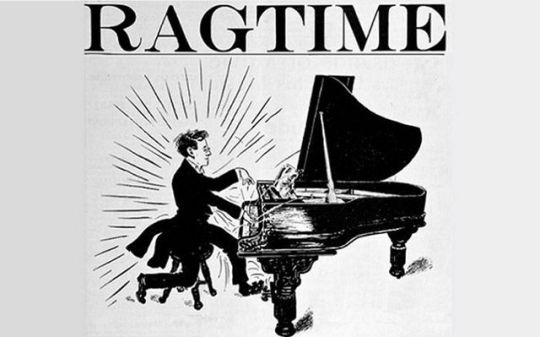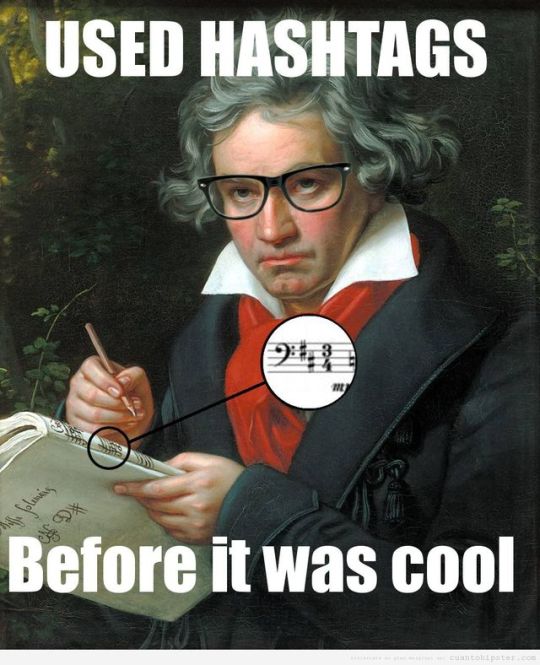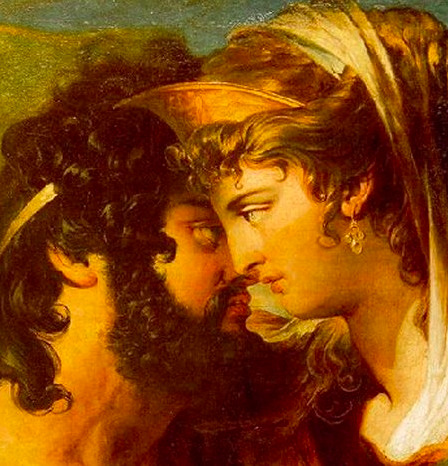Don't wanna be here? Send us removal request.
Photo

I mean, can we just take a second to talk about Scott Joplin and his banger “Maple Leaf Rag”. Forget all the new rap and hip hop, Ragtime jazz is where it’s at!! Cengage says Ragtime was popular between 1890 and 1920 but I beg to differ. I still bang me some Ragtime in my car. Blew one of my speakers playing “Maple Leaf Rag” just the other day. Especially when the song ends on two solid chords, I mean JEEZ. BANGER am I right or am I right? Ragtime songs are usually peppy songs with balanced phrasing and key centers, two beats to a measure and catchy melodies. Some of these melodies run through my head all day long because they’re so catchy. Some of the most known songs are “Hot Time in the Old Town”, “Alexander’s Ragtime Band” and Way Down Yonder in New Orleans” but “Maple Leaf Rag” and still the best for sure. Scott Joplin’s Ragtime song most exclusively includes solo piano music. Older Ragtime songs didn’t include this so Joplin just killed the jazz music game with his solo piano song. Let’s also not forget a solo piano song is NOT easy to do. Piano rag also benefited greatly from the mechanical player piano. Some rags existed only on piano rolls and not on sheet music. The one and only “Maple Leaf Rag” was actually originally a piano roll. Ragtime’s home was in the small and large cities of the Midwest, but its new home is mine. I will forever bang ragtime in my car, especially “Maple Leaf Rag”.
0 notes
Photo

The second the 20th century started, no one wanted to be basic and music just went crazy. Traditional music is the complete opposite of what the 20th century music was. When Bartok was composing his Concerto for Orchestra he created five different movements within it. The first movement is based on the interval of a fourth. The second movement is then called “Games of Paris,”. The third movement is the “lugubrious death-song”. The fourth movement is called “Interrupted Intermezzo” and finally the fifth movement is a very large three-part form. The fourth movement of Bartok’s Concerto for Orchestra is absolutely beautiful. About a minute into the music, the second theme begins, and your head almost explodes. Then abut 40 seconds later he plays the first theme again. These themes go together so well so when they switch back and forth your heart just skips a beat…. At least I know mine does. Bartok was an extremely important Hungarian composer…..and man he sure makes me Hungarian for some more good music!! Brazilian composer Heitor Villa-Lobos adopted his musical ideas from multiple different sources and it sure shows in his music. I’m usually full from all my Hungarian music, but I always leave room for dessert. Heitor Villa-Lobos’ Aria from Bachianas Brasileiras No. 5 is my favorite dessert. This piece is just so beautiful and it’s A B A form just keeps me wanting more. I have to be careful or else it will make me fat. Sometimes if I’m felling extra special, I’ll treat myself to some Dies irae from War Requiem by Benjamin Britten. That piece is too heavenly to have for dessert every night, its only on special occasions. You have to be careful with it though because it doesn’t flow too well, so it will keep you off balance. Remember: special occasions only!!!
0 notes
Photo

Impressionism is a very strange time period, but the music and art that came out of it were outstanding. First let’s talk about some of the art, then I’ll get to the GOOD stuff, the music baby!!!!! Claude Monet created a beautiful piece of the Rouen Cathedral composed of lines and shaped, and shadows. He created this piece over and ever from different times of the day in different weather conditions. This artwork was a huge part of the impressionistic time period. Now were on to the fun stuff, the music. Impressionistic music contains more flute and harp and less brass instruments, so it is just heavenly to your ears. Now I don’t know about you man, but my favorite piece from this extraordinary movement is “Clair de lune” by Claude Debussy. OH MAN I LOVE THIS SONG. The form of this piece is A B A so it just keeps your head spinning like a roller coaster. A little over a minute into the song, the music gets loader and much more animated and you can’t help it but to stand up and dance. There is also a video of a live performance of “Clair de lune” and oh my goodness, I watch it at least three times a day. This piece is just to freaking beautiful I blast it through my headphones all day long. The simple basic melody behind the song is just beautiful, then the descending major scale comes in and your heart just skips a beat. If you haven’t blared this song through your head phones all day….then you’re missing out man.
0 notes
Photo

OHHHH SAY CAN YOU SEEEEEEEEE….. I am the definition of nationalism. Or if you want the real definition… “deliberate, conscious attempt to develop artworks that are characteristic of a particular country or region” blah blah blah blah blah. Its me, I am nationalism. My love for my country goes beyond any lengths you could imagine, the Russian five however, defiantly give me some competition in my nationalistic love. The leader of this group was Mily Balakirev. He was not very musically talented, nor am I, but he still had a huge impact of this group as he persuaded others to produce in a more German style. The other four that were a part of the Russian five were Modest Mussorgsky, Cesar Cui, Aleksandr Borodin, and Nikolay Rimsky-Korsakov. None of these were very trained in music but they were still such a huge part of the Nationalistic period. One of my favorite works in Modest Mussorgsky’s coronation scene from Boris Godunov. The A B A form of this piece just knocks my socks off, and its over nine minutes long so I can just listen to it and its like it never ends. Mussorgsky was considered the least accomplished of the five, but he was most important to me. Another piece from the nationalistic time that I blast throughout my car is The Moldau from Ma vlast. This piece is over twelve minutes long so my roommates hate when I play it in the car. This piece just flows so beautifully and just brings out my love for my country, or Bohemia…..
0 notes
Photo

I am definitely a hopeless romantic, I mean who isn’t at this point??? You’re telling me that you wouldn’t just love a cute moonlight date and some flowers….. Romance is all over the world, and my mans Beethoven killed the Romantic era. Beethoven should have been in my era loving me but instead he was in the Romantic era (1820 to 1900) loving nature. Beethoven’s Symphony No. 6 showed a very clear love for nature. Another piece that showed a huge love for nature was “Villa D’avray” by Jean-Baptiste-Camille Corot. This piece of artwork is of people sitting by a tree that looks over the lake. The second you look at this piece of artwork, your heart melts, or at least mine does. The tree and the lake in this picture are just outstandingly beautiful. The message behind this picture is “Nature is good and beautiful.”. Looking at this piece of art is truly just relaxing. Another huge theme in the romantic era was the love for beauty. There is a scene from a poem called “The Death of Siegfried” by Henri de Groux is another piece of art from this era that is just outstanding. If I could, I would get this artwork on my ceiling, so I could stare at it all night J. Listening to Romanic music will even give you the butterflies as the melodies just flow together perfectly with such passion. I think I’m in love with romantic music, it’s better than guys for sure. The rhythm in romantic music is also much freer so it lets your heart just float away like a beautiful dove. If I could bring all romantic artists to my time, I would do it in a heartbeat, all of us hopeless romantics would be in heaven in the romantic period.
#Beethovenismybaby
0 notes
Photo

Alright ladies and gentlemen, we are back on my side mans Mozart. I should really make him my hubby other than Claudio because he is really just a musical genius. Like I said, he is truly the goat in the musical community because he can do it all. Now I’m hooked on his Concerto No. 21. Concertos are difficult as there was a solo concerto movement AND a second movement. In the solo concertos, a composer pretty much did it all, write the music, organize the concerto, and manage it all. This is usually a solo concerto where the composer literally does it all, and they’re even usually paid more than the orchestra behind them. This usually causes some beef too, I’d be pissed if they got paid more than me and I was in the orchestra. Most concertos are usually the piano or violin, but my genus side mans used less typical instruments like the clarinet, trumpet, bassoon, and even the French horn. Some of these concertos are so beautiful and detailed they are still played today. Just like Mozart’s Concerto No. 21, I play it every day. The second movement of Mozart’s piano concerto is considered one of the most beautiful works ever written. THAT’S MY MANS. The form is A B A form it just makes my heart beat in an A B A for as well. There is a note throughout the concerto that is almost like a musical sigh, and that sign brings so much character in the whole song. A musical sign stops my heart :)
ALL HAIL KING MOZART
0 notes
Photo

As I said earlier, Claudio is my hubby, but my side mans was definitely Mozart. Mozart was not only my king, but the king of Sonatas. And a Sonata is not an easy thing to perfect, but Mozart seemed to perfect a Sonata in his Symphony No. 40, K. 550. Sonatas contain exposition, development, and recapitulation. Exposition has to do with the theme. The second this beautiful Sonata starts, the first theme jumps at you, and my heart jumps out for its beauty ;). Throughout the Sonata, we are given 8 measures, and these measures present multiple details. The first four measures suggest D D D B-flat (G minor) and C E-flat C (C minor). While that sounds extremely difficult to understand if you don’t understand that sweet music talk, but in other words, Mozart adds some dissonance into this Sonata. While dissonance is a lack of harmony and sounds displeasing, it makes the music a little spicy and different. Counterpoint is also a huge part in Mozart’s Symphony No. 40. During the countermelody, the strings play the first theme while violins come in afterward and begin the countermelody. Finally, the recapitulation recaps it all, simple enough, huh? The recap reintroduces the first theme and plays it again shortly. The recap does not last long, but it adds so much beauty to the end of the music. Mozart made this Sonata so beautiful in all aspects that he used. The theme used through this Sonata speaks volumes, and at the end when it is repeated, it just makes my heart skip a beat. Sometimes when I listen to this Sonata at night, it makes my heart skip a whole chord ;), it’s THAT GOOD. Mozart is truly the goat for his magical work in this Sonata.
0 notes
Photo

Opera man, I men jeez, it just gets me going. The music in the opera is just so stunning and beautiful, it takes my breath away. It is very hard to understand the words in opera as they just all seem to flow together like river; however, that river is made of my tears of joy. The dramatics of the opera just brings tears to my eyes as it is so beautiful. In the early Baroque period, there were many beautiful opera singers, however Claudio Monteverdi is by far the best. My man Claudio just killed the game in opera. Claudio’s madrigals changed drastically over time, and slowly started to become more homophonic in its texture. One of the biggest aspects of his homophonic texture was that he added more instrumental parts into his music and man it will just get you hype!!! My man Claudio is the reason for our brilliant change in music, I mean he solely bridged together the Renaissance and the Baroque period, can I get an AMEN. The last opera my hubby made before his death was “The Coronation of Poppea (L’incoronazione di Poppea)”. Now…. I’m not quite sure how to pronounce that last part, but what I do know is that this piece is just beautiful. This opera is about a very weak Roman emperor, but let me tell you, this piece is far from weak. Part of our active listening is another scene from The Coronation of Poppea and it is eye opening. The duet in this scene follows A B A and it just keeps your heading spinning trying to intake all of its beauty.
My hubby Claudio killed the game with this song, and just changed music forever. My hubby is a star forreallllllll.
0 notes
Photo

Gregorian chant is my favorite type of music. Out of all of the early western music, it is definitely my favorite and the one I listen to the most. Gregorian chants nonmetrical rhythm always keeps me on my toes and wanting more. The monophonic texture causes the music to have no harmony and it just makes my heart skip a beat, or chord shall I say ;). The smooth contour of the music just seems to drag out my attention for it. The modal scales make sure the Gregorian chant is not set in just a major or minor scale, so it is all of the place just like the butterflies in my stomach. The language of Gregorian chant is in church Latin, never English or any other languages, so not understanding the words helps keep me on my toes as well. Certain texts are also only sung at Mass by priests, so I have to go to my local church just to listen to it. “Dies irae” is my favorite Gregorian chant. “Dies irae” is from funeral or Requiem mass. “Dies irae” is one of the most well-known lines of chant, especially considering many composers used the first several notes in this chant to represent death or evil. Early forms of this song were shown in four-line staffs, while more modern forms use the traditional five-line staffs. This song is only one minute and six seconds long, but every second of this Gregorian chant is very beautiful and moving. This song will continue to be played top of the list on my playlist.
0 notes
Photo

My first blog post is over the song Hoe Down. The composer of this song is Aaron Copland, makes this song very upbeat and happy. First listening to this song makes me want to dance all over the room, even with how old the song is. The form of this song is three part, the tempo is allegro and the texture is polyphonic. Another feature in this song is that it is in syncopated beats. All of these features help to portray the song as upbeat as it is. The polyphonic texture includes three different melodies, including string instruments, brass instruments, and percussion instruments. This song has two distinct sections. The first section and second section have very different rhythmic patterns. The song starts off with the orchestra in a very fast and loud pace. Violins are also a part of the first section which help to lighten the music. A lower beat in the background helps to heighten the dance music feel. The second section begins with the trumpet which continues the upbeat dance music throughout the whole song. The string instruments throughout the second section continues the upbeat theme. The second section also has the sounds of a running horse in the background. The first section including violins and the orchestra repeats itself. The music slowly starts to fall off the table and become very slowly, then at the very end the orchestra comes back in very strong. Dance music comes back at the end and the song ends in a very dancelike and upbeat manner.
1 note
·
View note